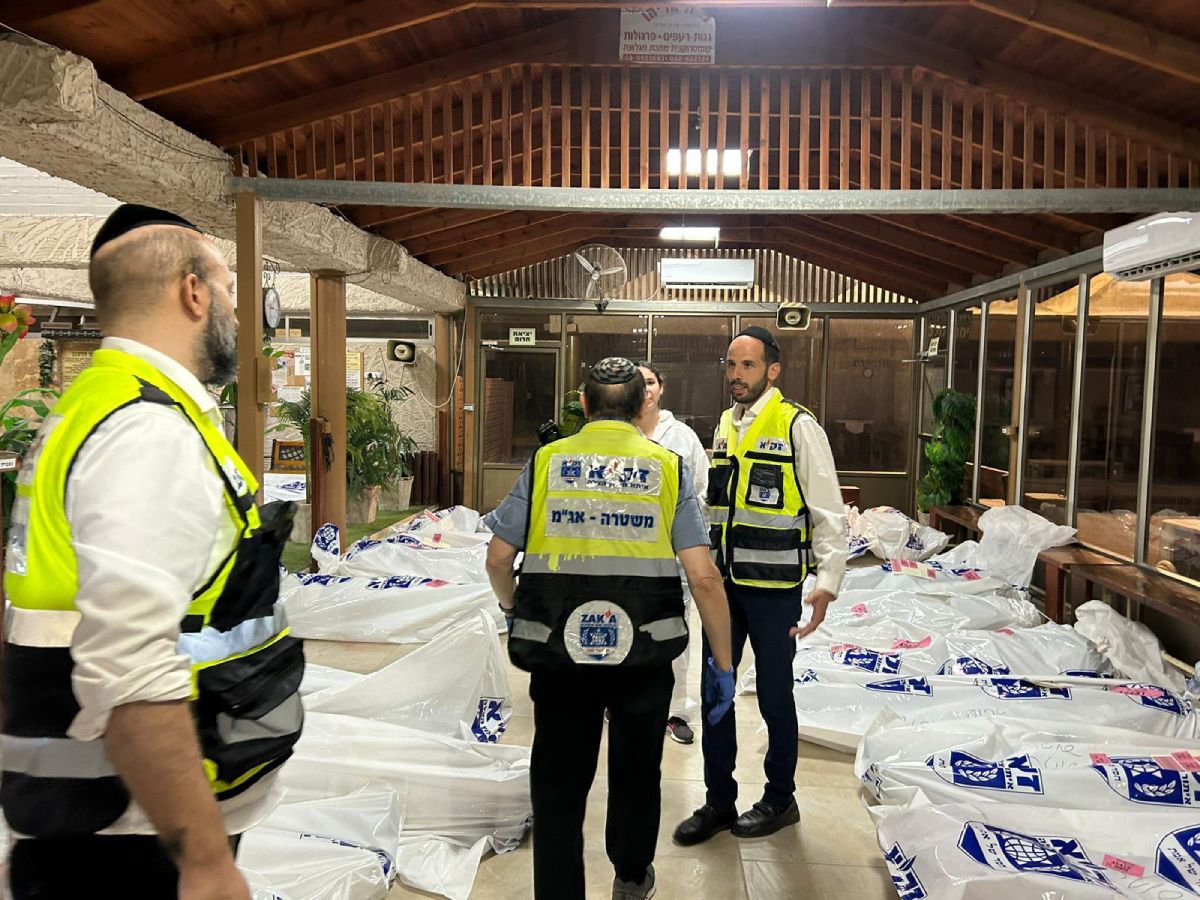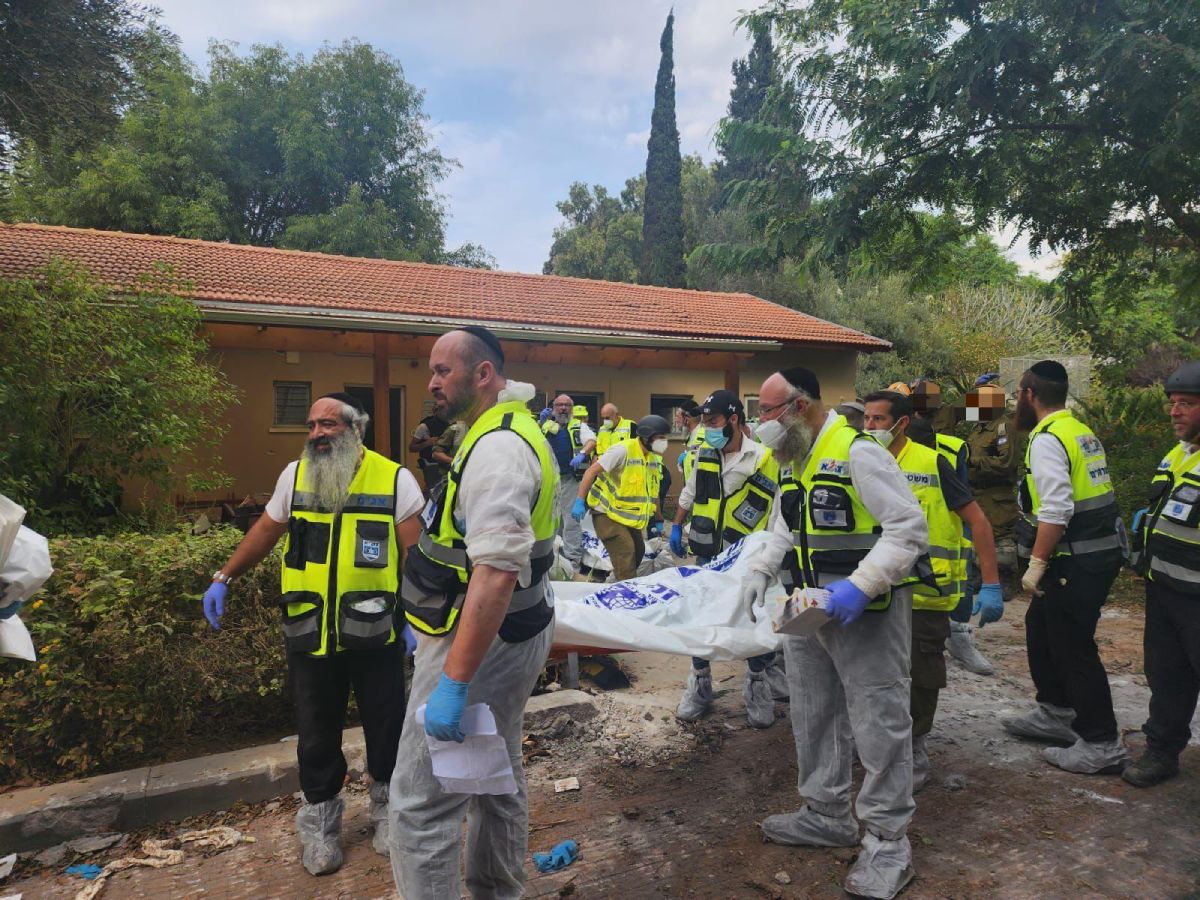The violent onslaught that began on the 7th of October 2023 by Hamas terrorists from Gaza has brought unprecedented heartache and devastation to Israel. The barrage of rocket attacks targeting the southern and central regions, the violent encounters near the Gaza border fence, and the harrowing tales of massacres and hostage situations paint a grim picture of recent events. As the dust settles, the Israeli nation grapples with a sorrow that transcends any prior conflict in its history.

The casualties at Nova Festival
The Tribe of Nova music festival was meant to be a joyous occasion, celebrating peace and the Jewish holiday of Sukkot. An estimated 3,500 Israelis, many young and looking forward to a night of vibrant electronic music, instead faced a horrifying attack that claimed at least 260 lives. With the majority under the influence of alcohol or drugs, the sudden and vicious attack only heightened the shock, confusion, and terror.
The casualties at Kibbutz Nir Oz
Kibbutz Nir Oz witnessed unspeakable horrors. Among the victims were Tamar, her husband Jonathan (Johnny), and their three young children: Dawn, Arbel, and Omar. Tamar, remembered as a beacon of positive energy, had just recently run for cluster council chair. Tsofia Cohen, Tamar’s friend, shared her grief on social media, expressing disbelief at the senseless violence that claimed the lives of an entire family. The chilling question remains: “What scums kill babies with their parents?”

The casualties at Kibbutz Beeri
The tragic and devastating events at Kibbutz Be’eri as described highlight the impact of violence and terror on innocent civilians. Kibbutz Be’eri, which was established in 1946, was a thriving community with a history of liberalism and peace activism. The October 7th onslaught led by Hamas terrorists resulted in the death of a significant portion of its residents, including many children, elderly, and other innocent civilians. Rescuers, volunteers, and forensic teams have been working diligently to recover bodies and provide answers to grieving families.
The detailed account of the assault paints a harrowing picture of violence. Homes were set on fire, residents were shot and killed indiscriminately, and the community was left in ruins. The aftermath, filled with burnt buildings, scattered personal belongings, and remnants of lives lost, serves as a chilling testament to the brutality of the attack.
The casualties at Kfar Aza
Kfar Aza, situated just a short distance from the Gaza Strip, experienced an unprecedented act of terror when about 70 Hamas terrorists penetrated its boundaries. The narrative reveals that within a short span, a once-thriving kibbutz was transformed into a scene of unimaginable horror. The attack specifically targeted the west side of the kibbutz, where young families resided, amplifying the sense of tragedy as many of the casualties were children.
The courage displayed by the kibbutz’s volunteer armed guard, who, despite their valiant efforts, were all killed defending their homes, is a testament to the community’s resilience and the bonds that united them. The terrorists’ choice to abduct hostages, including women, children, and seniors, and take them back to Gaza adds another layer of complexity and anguish to the situation.
The casualties of Sderot
Terrorists infiltrated Sderot and engaged in a fierce firefight with Israeli police and civilians. They later seized the local police station. After nearly 20 hours of intense combat, the decision was taken to demolish the building with the terrorists still inside. This incident resulted in the loss of at least 20 police officers.

The casualties in Ofakim
The town of Ofakim witnessed severe violence, resulting in the death of at least 30 residents. Reports suggest several civilians were also abducted to the Gaza Strip.
The casualties in Kfar Aza
This kibbutz experienced a harrowing attack with a high civilian casualty count.
The casualties at Kibbutz Holit
Eleven of the kibbutz residents and two foreign workers were murdered.
The casualties at Kibbutz Sufa
Early recognition by Elia Lilintal allowed for the mobilization of a defense squad, saving numerous lives.
However, the attack still led to three kibbutz members losing their lives.

The casualties at Kibbutz Zikim
An hour-long battle ensued after terrorists attacked, resulting in two injuries but successfully thwarting the assailants.
The casualties at Kerem Shalom
A prolonged six-hour defense against terrorists resulted in the loss of two members of the alert squad.
The casualties at Nir Yitzhak
The alert squad tried to repel the attackers, but faced abductions and several casualties.

The casualties at Kibbutz Magen
Multiple attempts by Hamas to breach this kibbutz were largely unsuccessful, although one kibbutz member was killed.
The casualties at Kibbutz Miflasim
In a prolonged confrontation, about 200 terrorists were killed, with the rest retreating to the Gaza Strip.
The casualties at Kibbutz Mivtachim
Despite being outnumbered, the alert squad defended their settlement, though at the cost of several lives.



The casualties at other attacks:
- The casualties at Netiv HaAsara: Both these places witnessed horrific violence, with terrorists slaughtering numerous residents.
- The casualties at Nahal Oz: A surprise attack led to mass casualties and abductions.
- The casualties at Ein HaShlosha: Terrorists committed a massacre, although their efforts were partially resisted by the kibbutz’s alert squad.
- The casualties at Moshav Yakhini: A raid by dozens of terrorists resulted in at least seven deaths.
- The casualties at Kibbutz Zikim: Six terrorists were engaged in battle and ultimately killed after attacking Kibbutz Zikim.
- The casualties at Nir Am: A lengthy battle ensued after 35 terrorists attacked Kibbutz Nir. Reinforcements eventually arrived, leading to the elimination of the terrorists.
- The casualties at Alumim: A lengthy battle unfolded against 30 terrorists, resulting in significant casualties and destruction.
- The casualties at Kibbutz Kisufim: A devastating attack led to the death of several kibbutz members and foreign workers.
- The casualties at Re’im: At the beginning of the surprise attack, dozens of terrorists attacked a bad kibbutz, and in the early hours defended the kibbutz in his six-member alert squad. Five of the kibbutz residents were killed and five abducted.
- The casualties at Pri Gan: Despite the alert squad being largely away, the terrorists managed to breach the settlement, leading to several casualties.
- The casualties at Yad Mordechai: The settlement’s defenses successfully repelled an attempted infiltration, preventing any terrorist from entering.
- A significant number of Arab-Israelis, mainly Bedouin, were killed in various attacks. Among the casualties were numerous foreign nationals from multiple countries.


Yossi Landau’s First-Hand Account
Yossi Landau, head of operations for the southern command of ZAKA, gave a distressing account of the aftermath. In just one week, his team has collected over 670 bodies, a number unparalleled in his 33 years of service. Landau described harrowing scenes, such as witnessing children shot in the back, entire families executed, and pregnant women brutally murdered. For Landau and his team, these are scenes they can never unsee. “I don’t know. If I have to explain it, then either I am in the wrong place, or the world is in the wrong place,” he lamented.
Dubi Wisenstern’s Experience
Under the helm of CEO Dubi Wisenstern, ZAKA has been an epitome of resilience amidst chaos. Wisenstern paints a haunting image of what his team faced on the ground: an “illogical mass” of devastation. Even as rockets flew overhead and sniper fire was a looming threat, the unwavering commitment of his teams was evident. They navigated through a grim landscape of deceased individuals, scorched earth, discarded weapons, and remnants of brutal killings. But even as they encountered such dire circumstances, the challenges didn’t end there.
ZAKA was operating on a severely depleted stockpile. The resources were dwindling at an alarming rate, with equipment being consumed ten times faster than usual. Their strained circumstances called for desperate measures. Wisenstern recounts the troubling times when ZAKA faced internal issues, stating, “I went through three difficult years with the Israel Police after they brought more organizations under what they called ‘ACHI’ – Gathering Jewish Bodies. The problem is that there are no procedures, and the police really don’t care about the dignity of the deceased according to Halacha. Until the arrival of Sigal Bar Tzvi, head of operations, and the new commander of the volunteer department in the police, Avshalom Almaliach, who began to establish order together with the police rabbi and rewrite the procedures. But in the meantime, we suffered great damage.” Among other things, the government support that ZAKA received from the Emergency and Security Division of the Interior Ministry, about 2.5 million shekels a year, was withheld. “For 2021, I received only 600,000 shekels and we went into a deficit. Only now, at the beginning of the war, they released 1.7 million shekels to us for 2022.”
Thus, according to him, ZAKA entered this situation with a budgetary hole. This is why, with the outbreak of the war, he urgently contacted Eli Regev, head of the Emergency Division, asking for an emergency budget of 5 million shekels that would allow the organization to purchase essential equipment. “The emergency situation in the country and the need to deal with more than 1,000 casualties catches the organization in an economically unstable situation, but the thousands of volunteers risk their lives under fire and even now, as throughout the past year, they do not let the situation stop them,” wrote Weissenstern to the head of the Emergency Division. “We are required to make purchases costing many millions to protect the volunteers who encounter terrorists, and to purchase equipment that will enable us to bring the war casualties to be buried in Israel. This is a national mission.”
When talking about it, Weissenstern gets angry and raises his voice. “The Emergency Division is responsible for what is called ‘PASACH’ – Evacuation, Aid, Casualties. They are supposed to prepare the casualty concentration stations for horrific scenarios of thousands of dead. Today, I’m taking all the equipment from my warehouses – gloves, body bags, protection equipment for volunteers, and it’s not that I have large logistical centers. We used everything. Moshe Bar Siman Tov, the CEO of the Ministry of Health, who within a few hours from the moment I contacted him managed to organize more protective suits and helmets for me, and I also receive donations, but I have no more. Precisely this body that is supposed to assist me tells me they can’t help.”
During a conference call with Interior Minister Moshe Arbel, Weissenstern instructed Regev to ensure ZAKA’s budget. “Following this, I contacted Regev. I told him what I needed, which equipment, like body bags, zip ties, protective gear, and the like. He answered: ‘It’s not in my department, I don’t know how to help you. Maybe I can help with two packs of gloves.’ At that moment, I lost my cool and shouted at him over the phone. He is not at all prepared for an emergency. He prepared casualty concentration stations, but he has no manpower to execute; he relies on us. I told him ‘you should be ashamed’. They don’t care about ZAKA and they don’t care about casualties. Maybe once a year they have a meeting with us. The state is evading responsibility. At the end of the conversation, he told me he would turn the world upside down to try and help me, but until now I haven’t received a call. There are government ministries trying to get me a budget – it hasn’t happened yet.”

In Reflection
The events that began on the 7th of October have left an indelible mark on Israeli history. With more than 1,400 dead and 4,229 injured, the nation mourns its worst day ever.





